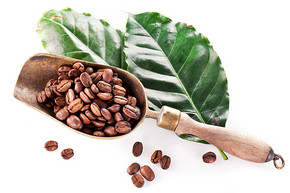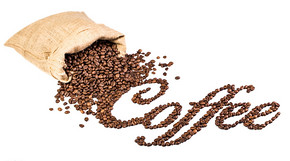The difference between ordinary organic Peruvian coffee and high quality organic Peruvian coffee
Follow the caf é (Wechat official account vdailycom) and found that Beautiful Cafe opened a small shop of its own.
Compared with high-quality organic Peruvian coffee, the difference between ordinary organic Peruvian coffee and high-quality organic Peruvian coffee is huge: relatively cheap beans are not only poor in quality, but often have obvious defects in the cup. Especially the grass flavor, overfermented flavor. It takes a lot of work to find good Peruvian coffee beans among a lot of middlemen or other people who can buy them. However, it also takes a lot of hard work to pick sample beans. But that must be better than working hard in piles of papers.
Peruvian coffee is grown in areas with temperatures of 18 to 26 degrees and annual precipitation of 700~1500mm, 100% made up of Arabica varieties and certified as an organic farmer by the International Organic crop Development Association (CCIA) in the United States. The coffee here is famous for its soft coffee with a mixture of fresh cheese and caramel and a sweet aftertaste for a long time. Benefiting from a number of import and export enterprises, Peru has become a representative producer of organic farmers' coffee in order to obtain investment in farms and processing plants that meet organic farmers' standards. Like coffee in other South American countries, Peruvian coffee is not well known in the coffee market. Although large sales organizations have carried out advertising campaigns in places such as Colombia or Brazil, Peru has no strategy for sales or exports. Although the popularity is not very high, it does not mean it is tasteless. Some people think Peruvian coffee is more delicious than Brazilian or Colombian coffee.
Peru is the land of the Incas and the place where high-quality coffee is produced. Peru is also the second largest producer of coca leaf, cocaine and fresh leaf extracts in the world. For farmers engaged in small-scale coca cultivation, this illegal industry puts them at risk of violence, financial instability and arrest.

Although Peruvian coffee production remains low compared with neighboring Brazil and Colombia, Peruvian coffee exports are growing rapidly, rising by 32 per cent between 2005 and 2006.
Peruvian coffee is almost entirely organic. Peruvian organic coffee is usually the cheapest certified organic coffee on the market and may have an impact on the global price of organic coffee. The Peruvian coffee industry only pays attention to the premium of organic coffee, thinking that it can produce cheap organic coffee, focusing only on quantity rather than quality. Since it takes several years for a farm to be certified for the production of organic coffee, some farmers who grow high-quality organic coffee can only accept low prices before they are certified. As a result, farms dedicated to producing high-quality coffee cannot compete with farms that only focus on quantity.
Peru also produces some very high-quality coffee, good organic coffee is very "rural" characteristics.
Peru, whose full name is the Republic of Peru (Spanish: Rep ú blica del Per ú), is a country in western South America, bordered by Ecuador and Colombia to the north, Brazil and Bolivia to the east, Chile to the south and the Pacific Ocean to the west, and is a member of the Union of South American Nations.
Geographical environment
Peru is located in western South America with an area of 1285216 square meters. It is bordered by Ecuador and Colombia to the north, Brazil to the east, Chile to the south, Bolivia to the southeast and the Pacific Ocean to the west. The coastline is 2254 kilometers long
As a rising star in the coffee industry, Peruvian coffee is gradually opening up its popularity and entering the international market. Peruvian coffee has always been used as one of the stable and mellow mixed beans of comprehensive coffee. Peruvian coffee has a mellow taste and the right acidity, and this lukewarm coffee attitude has made more and more people like it.
Peru is located in western South America, with a coastline of 2254 kilometers. The Andes runs from north to south, and the mountains account for 1% of the country's area. it belongs to the tropical desert region with a dry and mild climate. Peruvian coffee is mostly grown at the foot of the Andes, where it is rich in traditional Central American top coffee beans.
Peru is a huge and diversified land for them to produce a large number of different kinds of coffee beans, Peru can produce very high-quality Peruvian coffee. In general, these coffee beans have the gloss of Central America, but they are all packaged in South American flavor. High-quality organic venues do have more rural coffee characteristics. As long as these coffee beans continue to add interesting flavors rather than weaken them. Such a cup of Peruvian coffee has all the bright and deep tastes. When a cup of ordinary Peruvian coffee is in your hand, you don't have to try to taste whether it is good or not.
Peruvian coffee beans are best known for their coffee beans from Chimacha Mayou in the middle and Cusco in the south. In addition, some areas in northern Peru also produce characteristic organic coffee. Organic coffee is made of beans grown in the shade of trees. Although the yield of coffee beans is not high because of the method of planting in the shade, its quality can reach the level of gourmet coffee. This is because shading trees can slow down the ripening of coffee trees, help coffee grow fully, make it contain more natural ingredients, breed better flavors, and reduce caffeine content.
Peruvian coffee is grown in a planned way, which has greatly increased coffee production. Its rich acidity and mellow smoothness are its most prominent features. Peruvian coffee has a soft sour taste, medium texture, good taste and aroma, and is an indispensable ingredient in the production of comprehensive coffee. High-quality Peruvian coffee, with strong aroma, smooth, layered, rich sweet, elegant and mild sour taste, will quietly awaken your taste buds.
Peruvian coffee beans are best known for their coffee beans from Chimacha Mayou in the middle and Cusco in the south. In addition, some areas in northern Peru also produce characteristic organic coffee. Organic coffee is made of beans grown in the shade of trees. Although the yield of coffee beans is not high because of the method of planting in the shade, its quality can reach the level of gourmet coffee. This is because shading trees can slow down the ripening of coffee trees, help coffee grow fully, make it contain more natural ingredients, breed better flavors, and reduce caffeine content.
Peruvian coffee is grown in a planned way, which has greatly increased coffee production. Its rich acidity and mellow smoothness are its most prominent features. Peruvian coffee has a soft sour taste, medium texture, good taste and aroma, and is an indispensable ingredient in the production of comprehensive coffee. High-quality Peruvian coffee, with strong aroma, smooth, layered, rich sweet, elegant and mild sour taste, will quietly awaken your taste buds.
Important Notice :
前街咖啡 FrontStreet Coffee has moved to new addredd:
FrontStreet Coffee Address: 315,Donghua East Road,GuangZhou
Tel:020 38364473
- Prev

Where does Peru's best coffee come from?
Following caf é (Wechat official account vdailycom) found that the Cafe Beautiful opened a small shop of its own. Peru's finest coffee is produced in Chanchmayo, Cuzco, Norte and Puno. Most famous for its coffee beans from Chaximayo in the central part and Cusco in the south, most Peruvian coffee is grown under natural conditions.
- Next

The richest Coffee in the World: Indonesian Manning Coffee
Following Cafe Review (Wechat official account vdailycom) found that Beautiful Cafe opened a small shop of its own. The masterpiece of South Asian Coffee is Indonesia. 1.3 million square meters of land in Indonesia is growing coffee, the second largest in the world. In addition to the civet coffee that Chinese people have heard about for many years but the hype is greater than the actual meaning, the best quality Indonesian coffee should be Mann from Sumatra.
Related
- Detailed explanation of Jadeite planting Land in Panamanian Jadeite Manor introduction to the grading system of Jadeite competitive bidding, Red bid, Green bid and Rose Summer
- Story of Coffee planting in Brenka region of Costa Rica Stonehenge Manor anaerobic heavy honey treatment of flavor mouth
- What's on the barrel of Blue Mountain Coffee beans?
- Can American coffee also pull flowers? How to use hot American style to pull out a good-looking pattern?
- Can you make a cold extract with coffee beans? What is the right proportion for cold-extracted coffee formula?
- Indonesian PWN Gold Mandrine Coffee Origin Features Flavor How to Chong? Mandolin coffee is American.
- A brief introduction to the flavor characteristics of Brazilian yellow bourbon coffee beans
- What is the effect of different water quality on the flavor of cold-extracted coffee? What kind of water is best for brewing coffee?
- Why do you think of Rose Summer whenever you mention Panamanian coffee?
- Introduction to the characteristics of authentic blue mountain coffee bean producing areas? What is the CIB Coffee Authority in Jamaica?

